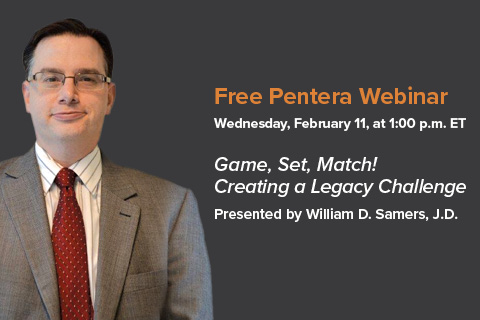
The Pentera Blog
Effective Marketing Can Help Reveal Surprise Bequests
Top consultant Jon Heintzelman speaks from experience when he explains what a mysterious "saver" donor is (donors who confound planned giving offices by making smaller gifts during their lives while saving their assets—and then make surprise bequests). Jon encountered one such donor when he was helping her move after her husband died.
"I was helping her clean out her garage and I asked if we were done," relates Heintzelman, who has directed planned giving programs and conducted research at Northwestern, Loyola, and North Park universities and is now chairman of consulting firm Ter Molen Watkins & Brandt. "And she said, 'Yes, except for one thing: the gold in the attic.' There was a trap door in a closet, and when I poked my head through it there staring me in the face were four big canvas bags of Krugerrands: $25-$30 million for a deferred gift! Now that's a 'saver.' "
Jon has conducted studies at all three universities showing the significant differences between the easy-to-identify "spenders" who make outright gifts and the almost-invisible "savers" who make bequests. The problem is that the saver donors are difficult to find in your database. Many have little giving history, and their modest lifestyle doesn't indicate that they could make a significant gift. Many value their privacy and prefer not to get phone calls or visits from fundraisers.
He says that is all the more reason for charities to have a robust planned giving marketing program.
"The difficulty of identifying the savers as potential planned gift prospects places a premium on creating an effective marketing program for planned gifts," Jon says. "There are several facets to such a program, beginning with a thoughtful and consistent direct mail and e-mail initiative as well as a planned gift presence on the development office's Web site. All of these help to stimulate potential prospects to self-identify."
Pentera helps Northwestern program grow
Jon began with Northwestern University in 1980, with Pentera providing the marketing
materials, and helped develop one of the most successful planned giving programs in the nation.
"When I left in 2002, we had $235 million in life-income plans—among the top five in the country," he says. "A large part of that success was our Pentera-produced newsletter, Dealing in Futures, that helped make planned giving something that alumni and friends would consider. It wasn't all Northwestern and it was not all Pentera but rather a great partnership."
Largest bequests come from smaller donors
At Northwestern, Jon found that every single one of the major outright gift donors ($50,000 or more) were already giving at a level of $1,000 and above—leaving a trail of gifts and contacts
with the institution. That was a huge contrast with the two-thirds of bequest donors who were "never-givers" prior to their bequests. The differences between spenders and savers were less dramatic but still obvious in his research at Loyola.
In the North Park research he broke down the bequests into six categories by dollar amount and found that those giving the largest bequests had the lowest average last gift, the fewest average number of gifts, and the lowest total outright giving during life.
"The North Park study would seem to indicate that there is actually an inverse relationship between lifetime giving and estate giving," Jon says. "The largest bequest gift of $8 million came from a donor whose lifetime giving was $25 and who had had no contact with the university of any kind.
"We don't really know what accounts for the largest bequests coming from the smaller donors," he says. "One of the 'life lessons' we learn to live with in this business is that we will not always be able to know when and how much and from where these gifts may arrive someday. The effective marketing of planned giving through a variety of vehicles on a consistent basis, however, takes on added importance in light of the findings in these studies."


